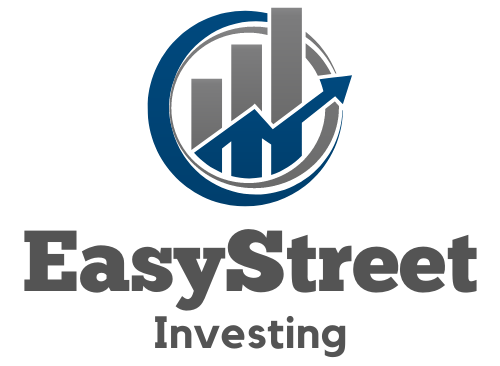In an economic climate where inflation nibbles away at purchasing power, savvy investors often turn to high-yield bonds as a potential life raft. Known for their higher interest returns compared to their investment-grade counterparts, these bonds, also dubbed “junk bonds,” can seem like a tempting harbor in the stormy seas of depreciating currency. This article peels back the layers on the true viability of high-yield bonds when prices are on the upswing, offering insights into how they might cushion your portfolio or expose it to hidden shoals.
As we dive into the nitty-gritty of high-yield bonds amidst rising costs of living, you’ll discover the balancing act between risk and reward. We’ll explore whether these financial instruments can truly deliver a hedge against inflation or if they’re a siren song luring unwary investors onto rocky shores. Expect to come away with a clearer understanding of how these bonds operate in inflationary times, armed with knowledge that could help steer your investment decisions. So buckle up; it’s time to get real about high-yield bonds and inflation.
Important Highlights
1. High-yield bonds, also known as junk bonds, can serve as a hedge against inflation. These bonds typically offer higher interest rates than investment-grade bonds, which can help investors keep pace with the eroding effects of rising prices. However, the associated risk is also greater due to their lower credit quality.
2. One must consider the interest rate sensitivity when investing in high-yield bonds during inflationary periods. While these bonds are less sensitive to interest rate changes compared to higher-quality bonds, they are not immune to market fluctuations. This implies that if central banks hike interest rates to combat inflation, high-yield bond prices might still be adversely affected.
3. High-yield bond issuers are often companies with higher leverage and weaker balance sheets. During times of economic growth, these companies can benefit from increased revenues which may improve their creditworthiness and reduce the likelihood of default. This potential for improved financial health can make high-yield bonds an attractive proposition for informed investors seeking upside potential.
4. Diversification is key when adding high-yield bonds to an investment portfolio during inflationary times. By spreading investments across various sectors and issuers, investors can reduce the risk of default inherent in this asset class. An effective strategy could involve integrating a mix of bond maturities and credit qualities, possibly through funds or ETFs that specialize in high-yield debt.
5. Investors should perform thorough credit analysis before selecting high-yield bonds to ensure they understand the issuer’s ability to meet debt obligations. Factors such as industry trends, company-specific news, and economic forecasts play crucial roles in assessing the viability of these securities in a portfolio poised for inflationary pressures.
Remember that while there’s no one-size-fits-all approach to investing in high-yield bonds during inflationary periods, careful evaluation of risks versus rewards is imperative for maintaining a robust portfolio.
Understanding High-Yield Bonds in an Inflationary Context
Inflation often triggers a reassessment of investment strategies, particularly when it comes to fixed-income assets like bonds. High-yield bonds, commonly known as junk bonds, are debt securities issued by companies with lower credit ratings than blue-chip firms. These instruments offer higher interest rates to compensate for the increased risk of default. During periods of inflation, the higher coupon rates of high-yield bonds may appear attractive, as they can potentially provide returns that outpace inflation.
Risks and Rewards of High-Yield Bond Investments
Investing in high-yield bonds is not without its challenges, especially during inflationary times. The elevated coupons reflect the inherent risk in lending to companies with questionable creditworthiness. Inflation can exacerbate these risks, as rising prices may hurt the profitability and cash flow of these companies, increasing the likelihood of default. However, for savvy investors who conduct thorough due diligence, high-yield bonds can serve as a lucrative component of a diversified portfolio.
Interest Rate Sensitivity and High-Yield Bonds
When discussing fixed-income investments, one cannot overlook interest rate sensitivity. High-yield bonds usually have a shorter duration compared to investment-grade securities, which makes them less sensitive to interest rate fluctuations—a common occurrence during inflationary cycles. Therefore, high-yield bonds might maintain their value better than longer-duration bonds if interest rates rise.
The Role of Credit Spreads in High-Yield Bond Valuations
Credit spreads—the difference in yield between a high-yield bond and a risk-free government bond—widen or narrow based on market conditions and investor sentiment. During inflationary periods, spreads can widen as investors demand higher premiums for taking on additional risk. Monitoring credit spread trends is crucial for investors seeking opportunities in high-yield bonds during volatile economic cycles.
Portfolio Diversification with High-Yield Bonds
Portfolio diversification is essential for mitigating risks, and adding high-yield bonds to an investment mix can enhance yields while spreading exposure across different asset classes. Investors should balance their portfolios between high-risk and low-risk investments to manage overall volatility effectively.
Dynamics of Inflation and Default Rates
Historical data suggest that default rates on high-yield bonds tend to increase during economic downturns. Inflation can be both a symptom and a cause of an economic slowdown. Therefore, understanding the dynamics between inflation levels and default rates is imperative for investors looking at high-yield bonds as part of their strategy.
Tactical Allocation to High-Yield Bonds
Tactical allocation involves adjusting investment positions based on short-term market forecasts to capitalize on anticipated price movements. Given the unpredictable nature of inflation’s impact on various sectors, tactical allocation can help investors take advantage of market inefficiencies that may arise within the high-yield bond sector.
Fiscal and Monetary Policy Implications
Governments often respond to inflation with changes in fiscal policy, while central banks may alter monetary policy — typically by adjusting interest rates. These policies can influence bond yields directly and indirectly, affecting the performance of high-yield bonds. Keeping abreast with policy changes helps investors make informed decisions regarding their bond holdings.
Inflation-Adjusted Return Expectations
To accurately assess the viability of high-yield bond investments during inflation, one must consider real returns — nominal returns adjusted for inflation. A bond’s yield must exceed the current rate of inflation for the investment to retain purchasing power; hence investors should closely monitor both coupon rates and prevailing inflation figures.
- Analyze historical performance data for insights into how high-yield bonds have fared during previous periods of high inflation.
- Maintain up-to-date knowledge on central bank policies and economic indicators that could signal changes in inflationary pressures.
- Evaluate individual bond issuers’ financial health and industry outlooks to gauge potential vulnerability to inflation-induced stress.
- Balancing your portfolio regularly ensures optimal exposure to high-yield opportunities while managing downside risks.
- Consider working with a financial advisor who specializes in fixed income markets to navigate complex scenarios posed by inflationary environments.
Frequently Asked Questions
How do high-yield bonds perform during inflation?
In times of inflation, high-yield bonds can often provide better returns than investment-grade bonds. This is due to their higher interest rates, which may help counter the eroding effects of rising prices. However, it’s crucial to consider the increased risk of default that these bonds carry.
Are high-yield bonds a good hedge against inflation?
While not a perfect hedge, high-yield bonds may offer some protection against mild inflation because of their higher interest payments. Yet, in periods of extreme inflation, they might not fully shield your capital from the diminishing value of money.
What risks should I consider with high-yield bonds in an inflationary environment?
The primary risks include credit risk as companies issuing these bonds are more susceptible to economic downturns, leading to defaults. Inflation can also lead to interest rate hikes, potentially decreasing bond prices and affecting liquidity.
How does inflation impact bond yields?
Rising inflation often leads to higher interest rates, which in turn increases new bond yields. Existing bond prices typically drop since newer issues become more attractive. However, high-yield bonds’ elevated interest rates might soften this impact.
Should I invest in high-yield bonds when inflation is expected to rise?
Careful consideration is key. If you anticipate moderate inflation and have a tolerance for risk, allocating a portion of your portfolio to high-yield bonds could be beneficial. Diverse investments can help manage potential risks involved.
Can diversifying into high-yield bonds improve my portfolio’s performance during inflation?
Diversification can indeed enhance your portfolio’s resilience. Including high-yield bonds may boost income and potentially offset other assets’ weaker performance amidst rising prices.
What is the correlation between high-yield bond returns and inflation rates?
The correlation varies over time but tends to be less negative or even positive compared to other bond types. This means that as inflation increases, high-yield bond returns may hold up better or even improve relative to other fixed-income assets.
How do central bank policies during inflation affect high-yield bonds?
Central banks may hike interest rates to combat inflation. Higher rates can make borrowing costlier for companies issuing high-yield debt, possibly leading to payment difficulties and impacting bond values negatively.
How important is duration when considering high-yield bonds in an inflationary period?
Duration measures a bond’s sensitivity to interest rate changes. Shorter-duration high-yield bonds are generally less impacted by rate hikes and may be more stable during periods of increasing inflation.
What role do credit ratings play for high-yield bonds during times of rising prices?
Credit ratings are crucial as they indicate the issuer’s financial health. In an environment where costs are climbing, firms with lower credit ratings (and thus higher yielding bonds) face greater challenges in servicing their debt.
Closing Insights on High-Yield Bonds Amidst Inflation
In summing up the discussion on the suitability of high-yield bonds during inflating economies, it’s clear that while these instruments may offer enticing yields and some level of protection against rising prices, they come with considerable risks. Investors need to weigh these factors meticulously and align them with their risk appetite and investment horizon.
Balancing a mix of asset types could be wise during unpredictable economic cycles. For those willing to embrace higher risk for potentially higher rewards, including a measured slice of high-yield bonds in one’s portfolio could serve as an effective strategy. Nevertheless, keeping abreast of market trends and being ready to adjust one’s approach is paramount in navigating the uncertain tides of inflation-driven markets.

